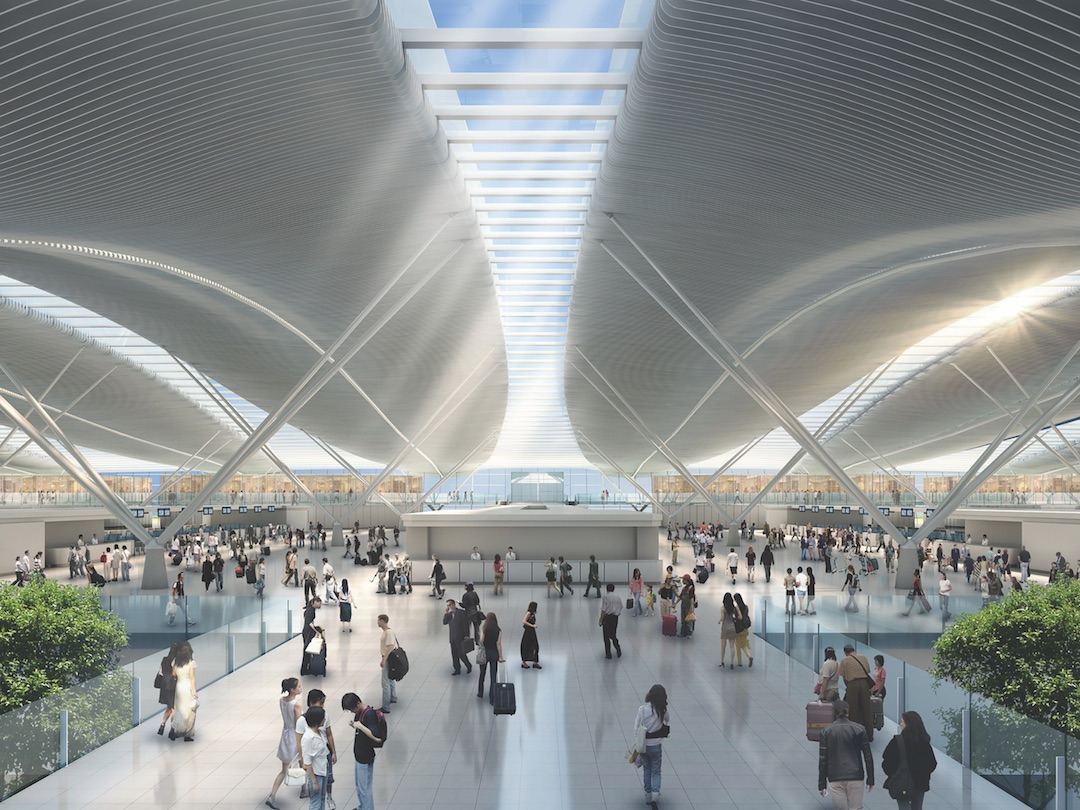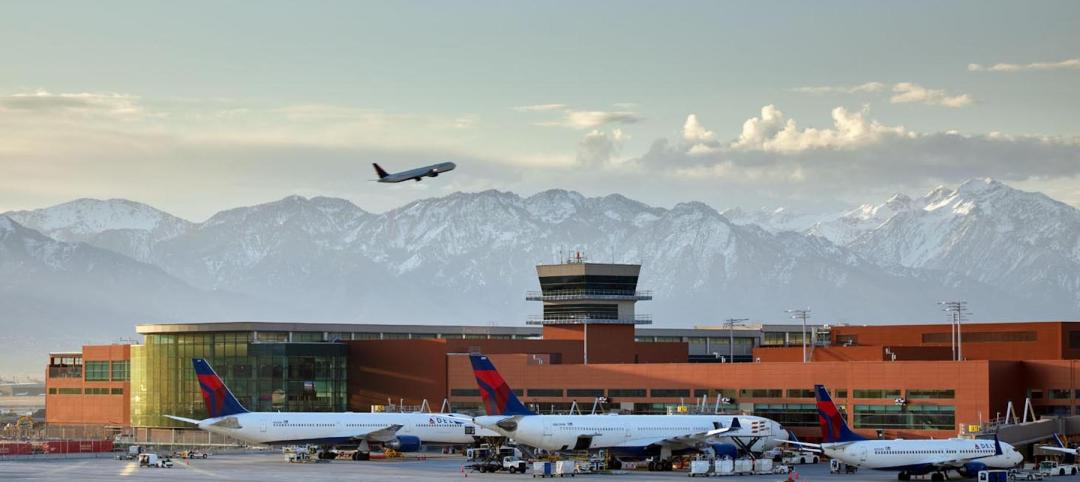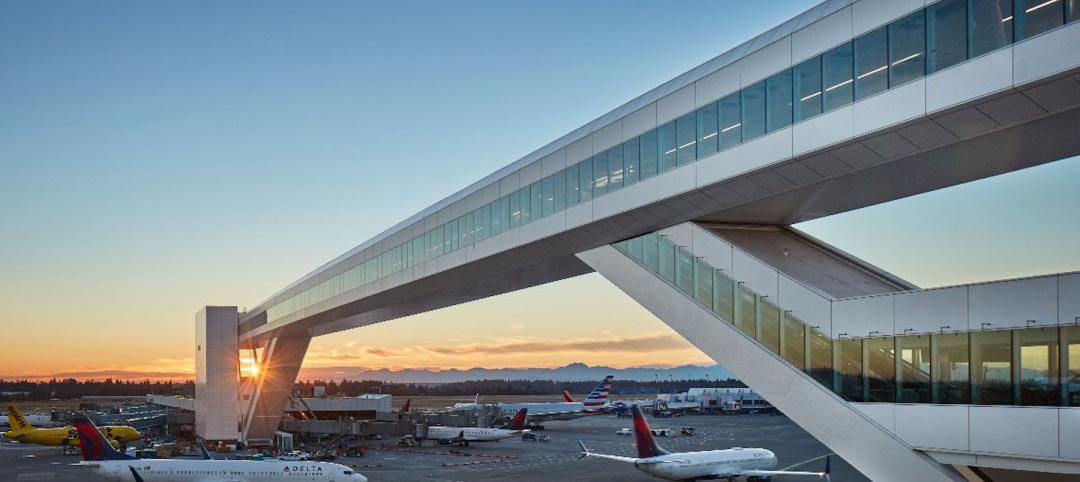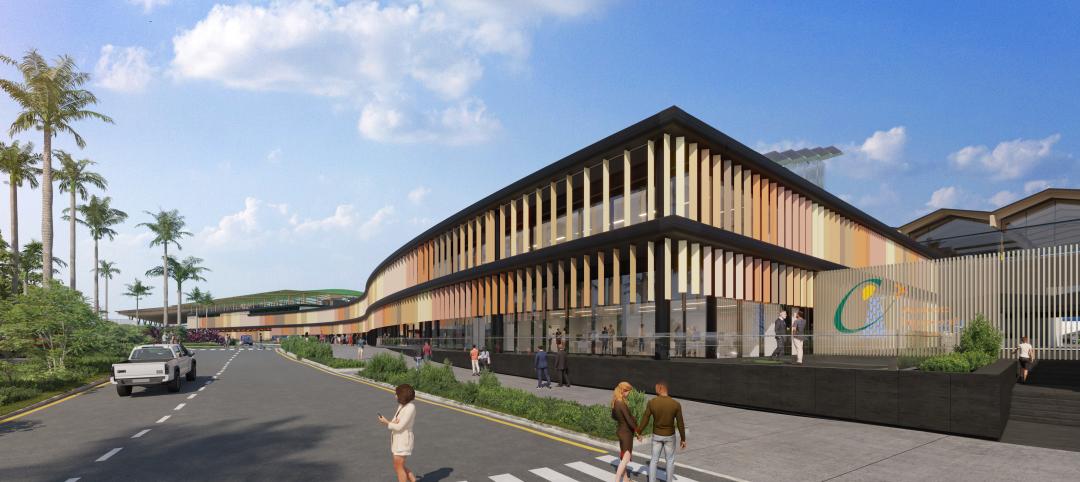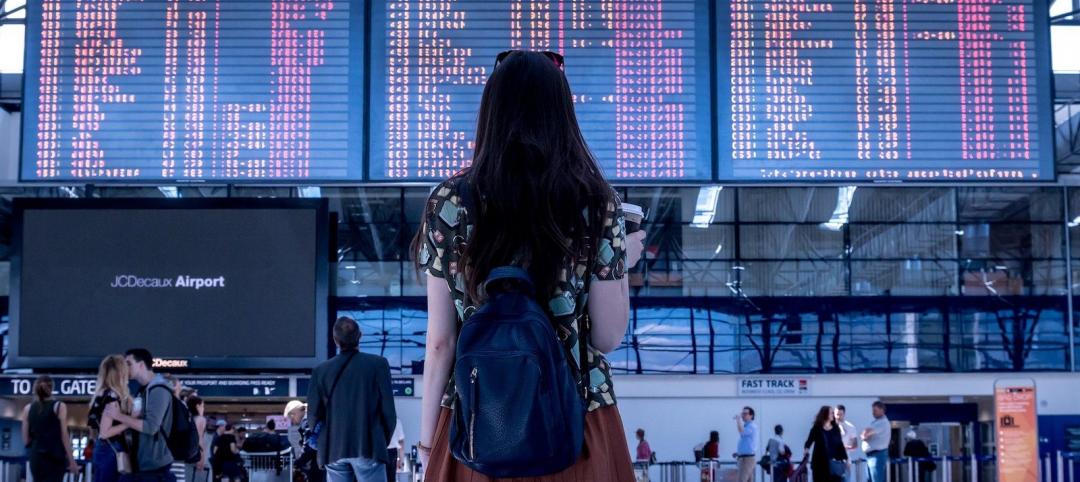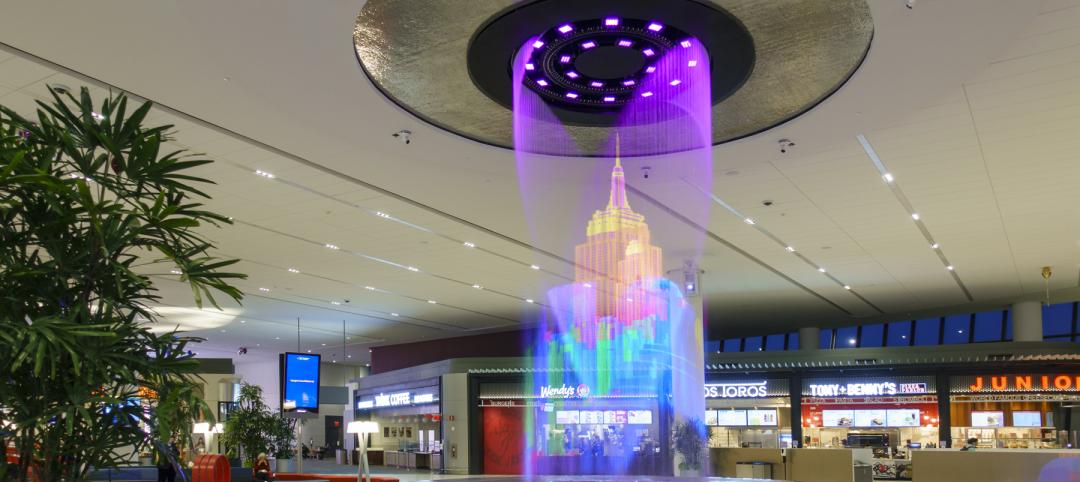Domestic and foreign airlines serving the U.S. carried an all-time high of 965 million passengers in 2017, according to the U.S. Department of Transportation. Airports Council International estimates that 8.8 billion flyers used airports worldwide last year, up 6.6%.
Airport operators everywhere are scrambling to keep pace. “Construction and expansion of airports is growing at a rate of 5–10% or more around the world,” says Jay Fraser, Vice President/General Manager of Turner Construction’s Aviation Group. Turner is adding a three-level, 50,500-sm international port at Cam Ranh International Terminal in Vietnam to handle 2.5 million passengers a year.
Turner and PLC Construction Services are working on the Federal Inspection Services (FIS) Relocation and Expansion project at San Diego International Airport’s Terminal 2 West, which will house Customs and Border Protection services.
U.S. AEC aviation-sector firms are benefiting from the high level of deferred investment in infrastructure, airline profitability, and the strength of the dollar, note Keith Thompson and Terence Young, Principals in Gensler’s Los Angeles office.
See also: Top 45 Airport Facilities Architecture + AE Firms - 2018 Giants 300 rankings
See also: Top 55 Airport Facilities Engineering + EA Firms - 2018 Giants 300 rankings
See also: Top 55 Airport Facilities Contractors + CM Firms - 2018 Giants 300 rankings
Skidmore, Owings & Merrill is lead designer for the new 450,000-sf International Arrivals Facility at Seattle-Tacoma International Airport. It will add eight gates for widebody aircraft and 50 more passport checkbooths and kiosks.
AEC firms that practice design-build or integrated design delivery methods and are open to public-private partnerships are in the sweet spot for airport projects. “Clients are looking at delivery models that save money and time,” says Bijan Pashanamaei, PE, Director of AECOM Global Aviation.
He notes that the design and build portions for the modernization of Phoenix Sky Harbor International Airport’s Terminal 3 were wrapped into a single contract that included DWL Architects + Planners, SmithGroupJJR, and Corgan.
AEC firms are using quicker delivery methods incorporating modular and prefabricated components. “Many clients start with the desire for modular construction," meaning offsite assembly to minimize on-site disruption to ongoing operations, says SOM Director Derek Moore. “This makes sense at very busy airports with little elbow room for traditional construction.”
Mortenson Construction used “substantial fabrication” to deliver an Alternate Utility Facility to support Port of Seattle’s SeaTac airport in the case of disruptive high-wind events, says Mark Baughmam, DBIA, LEED AP, a Construction Executive with Mortenson.
using technology to ease travel anxiety
Turner's Jay Fraser calls technology “the most critical design advancement” for airports. At the FIS facility in San Diego, interactive wayfinding displays and self-boarding gates that
enable planes to load without attendants are being installed.
One new feature at airport gates is a “hearing loop,” which wirelessly transmits boarding announcements to hearing-impaired passengers via their hearing aids or cochlear implants.
“The expectation of technology continues to grow project to project,” says Michael C. Braun, AIA, LEED AP, Executive Vice President with DWL. “Almost every seat has access to power, and the Wi-Fi has excellent coverage. The design must integrate these components in a way that allows them to operate without undermining the architectural features.”
shopping malls with planes
Airports are also revving up their retail and food services. “Unlike struggling malls, airports have a constant source of potential shoppers,” says Kelsey Chesney, Vice President and Senior Brand Strategist, FRCH Design Worldwide.
The design of travel retail has been shifting from a purely efficient, commodity-based model to a targeted, experienced-based one, says Kevin Horn, LEED GA, CallisonRTKL’s Vice President. Airport store designs are showcasing unique local merchandise. “Shop-in-shop” layouts highlight brands and allow flyers to engage products physically and digitally.
Horn notes that some travelers actually route their trips through two of his firm’s recent projects—Inchon International Airport in South Korea and Changi International in Singapore—to take advantage of their expansive retail offerings.
Airports, says Chesney, are becoming “self-contained cities” and homes away from home for frequent flyers. Fitness and wellness centers are popping up in airports. SOM’s Moore is seeing children’s play areas, ubiquitous electrical outlets, premium lounges, and short-term sleeping rooms.
See Also: Retail's age of experimentation
“Adding seasonal outdoor spaces post security, interior landscaping and water features, and commissioned works of art are fast developing as distinguishing features of terminal design to create a sense of place,” says Moore.
In some of its recent airport projects, Gensler has introduced a town square concept that offers spaces for concerts, fashion shows, dance presentations, and local artists’ exhibits, along with meditation and yoga rooms.
This “sense of place” extends to how an airport building is positioned vis-à-vis its outdoor surroundings. DWL’s design for Scottsdale (Ariz.) Airport’s new 23,898-sf Aviation Business Center, says Braun, integrates shaded glass façades to enhance visitors' views of the nearby McDowell Mountains.
This $27 million Terminal Area Redevelopment project, which will expand two hangars, is transforming Scottsdale Airport from a corporate, general aviation reliever facility into "a community resource and a point of pride for the city,” says Braun.
Related Stories
Airports | Jul 7, 2022
Love at first flight: The power of first impressions in airports
As architects, how we design a terminal and choreograph the passenger experience can stir up strong feelings.
Airports | Jun 29, 2022
BIG and HOK’s winning design for Zurich airport’s new terminal
Two years ago, Zurich Airport, which opened in the 1950s, launched an international design competition to replace the aging Dock A—the airport’s largest dock.
Airports | Jun 2, 2022
SOM-designed International Arrival Facility at Seattle’s Sea–Tac airport features the world’s largest aerial walkway
The Skidmore, Owings & Merrill (SOM)-designed International Arrivals Facility (IAF) at Seattle-Tacoma International Airport has opened, replacing a 50-year-old arrival facility.
Sponsored | BD+C University Course | May 3, 2022
For glass openings, how big is too big?
Advances in glazing materials and glass building systems offer a seemingly unlimited horizon for not only glass performance, but also for the size and extent of these light, transparent forms. Both for enclosures and for indoor environments, novel products and assemblies allow for more glass and less opaque structure—often in places that previously limited their use.
Airports | Apr 4, 2022
Dominican Republic airport expansion will add mixed-use features
The recently revealed design concept for the expansion of Santiago International Airport in the Dominican Republic includes a transformation of the current building into a mixed-use space that features an office park, business center, and hotel.
Codes and Standards | Mar 4, 2022
FAA offers $1 billion in grants for airport terminal and tower projects
The Federal Aviation Administration (FAA) is now accepting applications for about $1 billion in grants for airport projects during fiscal year 2022.
Resiliency | Feb 15, 2022
Design strategies for resilient buildings
LEO A DALY's National Director of Engineering Kim Cowman takes a building-level look at resilient design.
Sponsored | Resiliency | Jan 24, 2022
Blast Hazard Mitigation: Building Openings for Greater Safety and Security
Coronavirus | Jan 20, 2022
Advances and challenges in improving indoor air quality in commercial buildings
Michael Dreidger, CEO of IAQ tech startup Airsset speaks with BD+C's John Caulfield about how building owners and property managers can improve their buildings' air quality.
Giants 400 | Oct 22, 2021
2021 Airport Sector Giants: Top architecture, engineering, and construction firms in the U.S. airport facilities sector
AECOM, Hensel Phelps, PGAL, and Gensler top BD+C's rankings of the nation's largest airport sector architecture, engineering, and construction firms, as reported in the 2021 Giants 400 Report.


